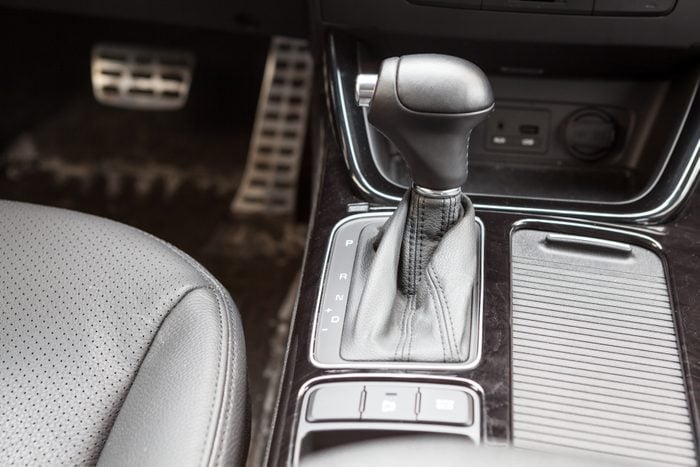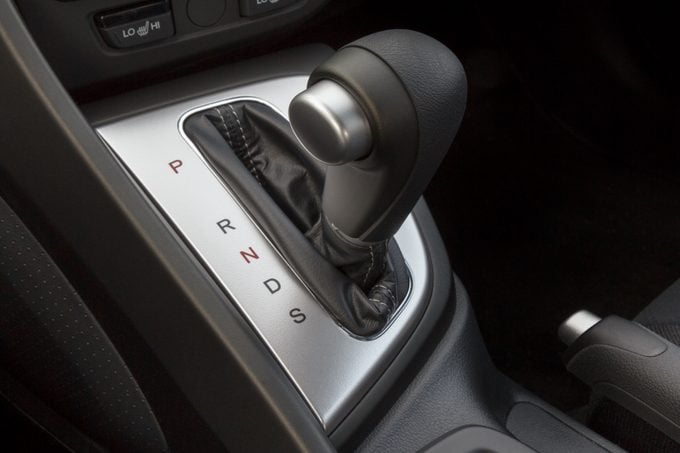When Should You Downshift Automatic Transmissions?
Updated: Feb. 07, 2024

Drivers rarely manually shift an automatic transmission, but knowing when to downshift in certain situations can be helpful.
The first truly automatic transmissions appeared in 1948 Oldsmobiles. According to Edmunds, a leading American online automotive resource information company, in 2019 more than 98 percent of all cars sold in the U.S. came with automatic transmissions.
Modern automatic transmissions are quieter, shift faster, feature more gears (up to 10) for quicker acceleration, help reduce tailpipe emissions and get better fuel mileage than manual transmissions.
On This Page
Manual vs. Automatic Transmission: What’s the Difference?
Although manual and automatic transmissions do the same thing — mesh and release interlocking gearsets that ultimately turn the drive wheels — they do so in different ways.
Shifting gears on a manual transmission requires the driver to depress the clutch pedal, disengaging the engine from the transmission. The driver then uses the gear shifter to physically move gearsets inside the transmission.
With automatic transmissions, once you place the transmission into drive, gear movement and shifting become, well, automatic. Driving an automatic transmission allows drivers to keep both hands on the steering wheel, making driving safer, simpler and more pleasurable.
How Does an Automatic Transmission Work?
(Note: What follows is extremely technical. If you’re not interested in the whys and hows, scroll down to the next section.)
Automatic transmissions shift gears using pressurized automatic transmission fluid (ATF). A valve body routs the fluid through a sophisticated network of channels and passageways to various internal friction bands, pistons and multiple disc clutch packs that lock and unlock ingenious compound-planetary gearsets.
Transmission gear, and gear ratios, are determined by which parts of the gearsets are free-wheeling or held stationary by the bands and/or clutch packs. Automatic transmission shifts, up and down, are controlled by engine load, throttle position and other driving factors.
Pre-computer-controlled vehicles used mechanical vacuum modulators, governors and cables to control shift points. Today’s vehicles use numerous input sensors that send data to a computer (ECM).
The ECM manages shift points by turning shift solenoids inside the transmission on and off. Solenoids direct ATF through the valve body. The valve body then routes the ATF to the correct passageways, where it applies or releases the bands and or clutch packs.
What Is Downshifting?
Manually downshifting an automatic transmission into a lower gear slows the vehicle. Lower gear ratios reduce the output speed of the transmission but increases torque, giving you better control of your vehicle under certain driving conditions.
Shifting into “L” or first gear “1” keeps the transmission from upshifting automatically. Automatic downshifting, also known as engine braking, takes place when you remove your foot from the accelerator.
Engine braking happens when a slower rotating engine engages a faster spinning transmission — basically, reverse acceleration. Removing your foot from the accelerator closes the throttle, restricting engine air flow, which builds up a strong vacuum in the intake manifold.
Pistons working against high vacuum lose power, lowering engine RPMs, slowing your vehicle without the driver stepping on the brake pedal. Because you’re not pushing down as often on the brake pedal, slowing the vehicle via engine braking may extend the life of your brake pads and rotors.
On the other hand, automatic overdrive transmissions, or automatics with a locking torque converter clutch, have gear ratios greater than high gear or direct drive (1:1, one transmission rotation for every engine rotation). This reduces engine RPMs at highway speed to increase fuel economy, and lets the transmission automatically downshift when accelerating at highway speeds.
When Should You Downshift Automatic Transmissions?
You should downshift an automatic transmission in low traction situations, especially when your transmission shifts through all gears, spinning the wheels though your vehicle isn’t moving. Racing the engine and spinning your wheels will overheat transmission fluid, quickly damaging the transmission, ruining tires and cause premature engine and differential gear wear.
Manually downshifting an automatic transmission locks gearsets and clutch packs into a lower gear range that produces more torque and better maneuverability when:
- Pulling out of a snowbank;
- Driving on icy or slick roads;
- Driving through mud;
- Towing a heavy trailer;
- Coming down a long mountain road or steep hill; it keeps your brakes from overheating.
More recently, Grade Assist is becoming standard on cars and light trucks. Originally found on construction equipment, Grade Assist uses sensors and other electronics to automatically control transmission shifting and braking. This helps drivers maintain a safe speed when driving down long, steep inclines.
Automatic Transmission Shifter Numbers and Letters

Virtually all automatic transmission shifters have P, R, N, D. Depending on your vehicle, shifters may have D, 3, 2, 1, while most modern vehicles only have an L after the D.
So what do these letters and numbers mean? P, R, N, D, L = Park, Reverse, Neutral, Drive, Low, or as automotive engineers affectionately call it “prindel.” Numbers usually indicate the highest gear a transmission will automatically shift into.
Using the D, 1, 2, 3 example, starting out in “1” means the transmission will not shift out of low gear, “2” means it would shift from low to second gear. In the D, 1, 2, 3 example, driving in “3” will get you into the highest gear, but won’t engage the overdrive unit or locking torque converter until you shift into “D.”
The Final Word
Today’s sporty cars with continuously variable speed automatic transmissions (CVT) can have steering wheel-mounted paddle shifters that electronically shift an automatic transmission.
Originally developed for race cars, paddle shifters give drivers a sense of control and the ability to shift gears without pushing on a clutch pedal. ECMs on vehicles with paddle shifters are programmed to keep drivers from aggressive shifting that can damage their transmission.
